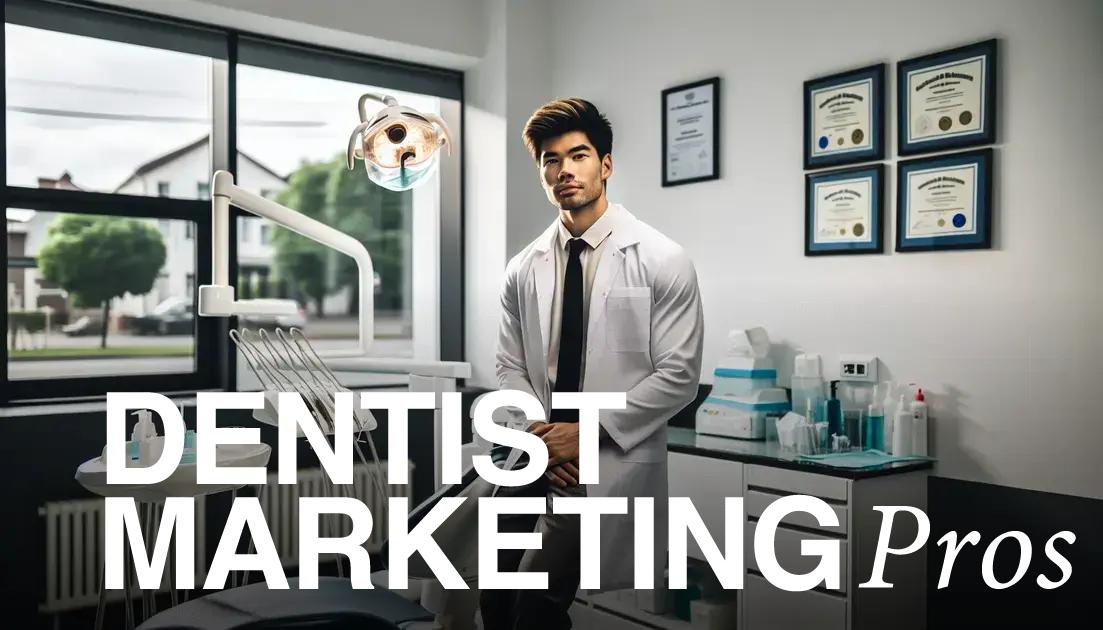Creating value-driven content for dental websites involves understanding and addressing your audience’s needs, diversifying and regularly updating your content, and evaluating your content’s performance. These strategies help improve your online presence, build trust with your audience, and attract more patients to your practice.
Have you ever thought about how critical quality content is for your dental website? Just imagine for a moment, a potential patient lands on your site, intrigued by the valuable hints on dental health, and eventually chooses to trust your practice. That’s the power of creating **value-driven content** for a dental website.
Understanding the Importance of Valuable Dental Website Content
Considering the digital age we live in, one of the most effective ways a dental practice can connect with potential patients is through a powerful online presence. And what’s at the core of this? Exceptionally valuable content on your dental website.
Take a moment to step into the shoes of your potential patients; what do they want to see when they visit your website? Well-researched, informative content that they can trust. After all, dental treatments can be complex and sometimes even a little scary. Accurate and easily digestible information can not only help them understand various procedures but also develop trust in your practice.
Further, high-quality content optimizes your website for search engines. Google, for instance, values websites that provide valuable content to their users and rewards them with higher rankings. This increases your visibility and attracts more visitors who might turn into regular patients. So, understanding the importance of value-driven content for dental websites is fundamental in crafting your overall digital communication strategy.
Key Ingredients to Create Highly Engaging Dental Content
Creating engaging content for dental websites requires a balance of several key elements. Firstly, pay close attention to your audience’s needs. Understand their common pain points and address them in your content. Remember, your audience is not just looking for a dentist, but a trustworthy source of dental information.
Secondly, simplicity is key. When explaining complex dental procedures, break down the information into understandable pieces. Avoid using too much medical jargon and instead use simple, everyday language that your audience can easily understand.
Thirdly, content freshness is crucial. Updating your website with new and relevant content is important not just for engaging your current audience but for attracting new readers as well. This could be in the form of informative blog posts, helpful videos, or even patient testimonials.
Lastly, include clear calls to action (CTAs) in your content. Prompt your users to book an appointment, subscribe to your newsletter or even share your content on their social media. CTAs create a clear path for your audience to follow, leading to higher conversion rates.
Tailoring your Dental Content for Specific Audiences

Knowing your audience is the first step to creating effective dental content. Are your readers young parents searching for pediatric dentistry, elderly patients looking for dental implant information, or individuals seeking cosmetic dental procedures? Understanding your audience’s unique needs, interests, and pain points will guide the tone, language, and subjects of your content.
For example, if your primary audience is young families, your content should focus on topics relevant to them, like the importance of early dental check-ups or guides to dealing with baby teething. This content should be presented in a friendly and empathetic tone, using language that is professional yet accessible to non-specialist readers.
Furthermore, include real-life examples and case studies when possible. These not only add credibility to your information but also help readers visualize their own situations, making your content more relatable and engaging. Remember, your content should not only inform but also reassure and encourage your readers to make the right dental health choices.
Strategies to Regularly Deliver Fresh and Original Dental Content
Keeping your dental website up-to-date with fresh and original content is not just good for your audience, it’s also a vital SEO strategy. Search engines like Google are always looking for new, relevant content to serve their users. Here are some strategies to help you consistently deliver fresh dental content.
Firstly, develop a content calendar. This helps you plan out what content to produce, when to release it, and how it fits into your overall marketing strategy. Consider seasonal dental issues, upcoming holidays, dental awareness months, or even trending topics in dental health.
Next, diversify your content types. Don’t limit yourself to just blog posts. Consider creating infographics, videos, podcasts, or even interactive content like quizzes. This not only keeps your audience engaged but also lets you repurpose one piece of content in multiple ways.
Don’t forget about community involvement. Highlighting your involvement in community events or sharing patient success stories is a great way to enrich your content. Remember, your patients are part of your content strategy, so include them whenever possible.
Fresh, original content will ensure your dental website remains a trusted resource for your audience and ranks well in search engine results.
Methods to Evaluate Content Performance for Dental Websites
Creating value-driven content for dental websites is important, but equally crucial is assessing the performance of this content. How do you know if your content is effective? Here are some methods you can use.
Google Analytics is a powerful tool that provides insights on how users interact with your website. Key metrics to monitor include page views, average time spent on the page, and bounce rate. By tracking these metrics for individual pieces of content, you can determine what types of content are most engaging for your users.
Another effective method is using SEO tools like SEMrush or Ahrefs. They allow you to track your content’s ranking in search engine results for specific keywords. If your content ranks well for its target keyword, you know it’s making an impact.
Finally, social shares can also serve as an indication of content performance. High share counts not only indicate that your content is compelling, but also amplify its reach beyond your immediate audience.
Beyond these quantitative methods, qualitative feedback from patients can also provide insights. Ask your patients directly about their thoughts on your website content during appointments. After all, they’re the reason you’re creating this content in the first place.
In a digitally driven world, the importance of creating value-driven content for dental websites cannot be overstated. Understanding your audience, tailoring your content, maintaining freshness, and constant performance evaluation are all essential parts of a successful content strategy. By focusing on these aspects, your dental practice can effectively use its website not just as a informational resource, but also as a tool to attract, engage, and retain patients. Remember, effective communication plays a significant role in a patient’s journey to better dental health, and your website content serves as an excellent platform for this communication.
FAQ – Frequently asked questions about creating value-driven content for dental websites
Why is it important to have value-driven content on my dental website?
Valuable content is the key to building trust with your audience, improving your online presence, and ultimately increasing the number of patients that choose your practice.
How should dental content be tailored for specific audiences?
Your content should be guided by the unique needs, interests, and pain points of your target audience. This means focusing on the topics, language, and tone that would be most relevant and engaging to them.
What types of content can I create for my dental website?
There are many types of content you could create, including blog posts, infographics, videos, podcasts, or even interactive content like quizzes. The key is to diversify your content types to keep your audience engaged.
How often should I update my dental website with new content?
Regular updates with fresh and relevant content are crucial for search engine optimization and for keeping your audience engaged. Creating a content calendar can help you plan for consistent updates.
How can I know if my dental content is effective?
There are many ways to assess the effectiveness of your content, such as tracking key metrics with Google Analytics, using SEO tools to track search engine rankings, or even directly asking your patients for feedback.
What should be my main goal when creating dental content?
Your main goal should be to provide valuable, trustworthy information that educates your readers and encourages them to choose your practice for their dental needs.








